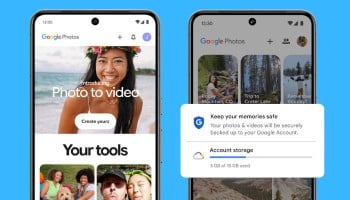
If you're using an Android phone, backing up your data is essential, not just for peace of mind, but also for smooth transitions to new devices, avoiding data loss, and ensuring your digital life stays intact.
However, with Google Photos now counting toward your free 15GB limit and most cloud storage options pushing you to upgrade, many users are wondering on how can they back up phone without paying extra.
Whether you're trying to extend your free storage or simply tidy up your backup habits, Gadinsider has compiled a simple guide to help you secure your data, for free.
How to back up your Android phone without spending money on storage?
- Open your phone's Settings, tap System, then Backup, and enable Backup by Google One. Tap Back up now to begin.
- Tap the Contacts app. Go to Settings and ensure your Google account is syncing contacts.
- Use Google Calendar and Google Keep for events and notes. They automatically sync with your Google account and don't consume a lot of storage.
- Don't backup media-intensive apps. Just keep it light by backing up SMS, call log, and app settings.
- Remove unwanted apps, downloads, and bulky files. It makes your backup quicker and leaner.
How to back up your phone once you've stored your photos somewhere else?
If you've already stored your photos and videos somewhere else (such as a hard drive or an alternate cloud solution), here's how to deal with the rest:
- Make sure your gallery is empty or that you’ve backed up everything to your chosen service like an external drive or app.
- Use Google Backup to save your settings, call history, and text messages. It doesn’t take up much space.
- Go to WhatsApp > Settings > Chats > Chat history and export important chats to your email or files.
- Add apps such as Dropbox, Microsoft OneDrive, or Mega to store PDFs, documents, and recordings without Google storage.
- Delete big and old files from your Google Drive and remove them regularly to not exceed the free storage capacity.
















